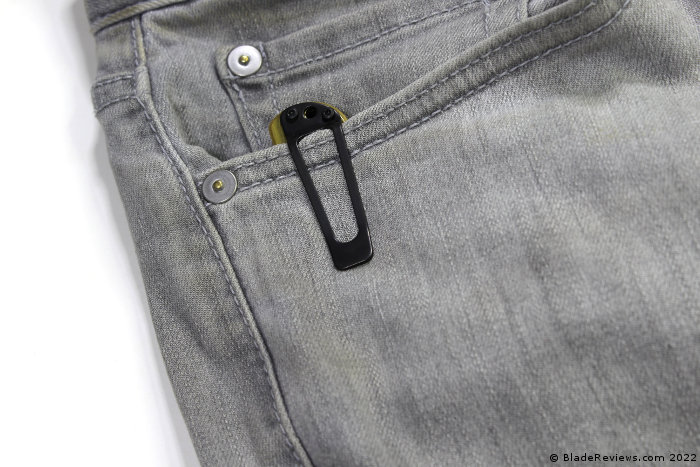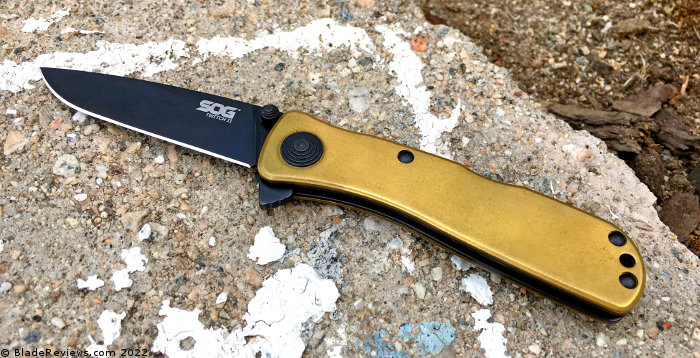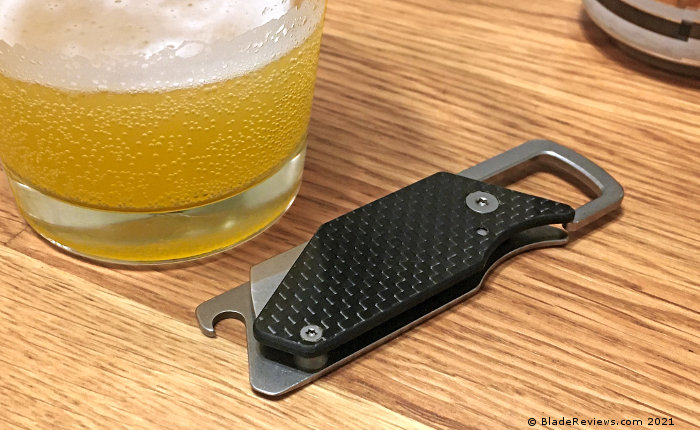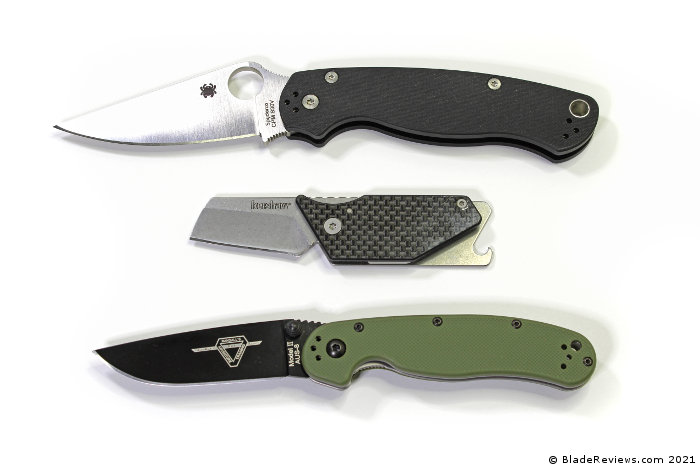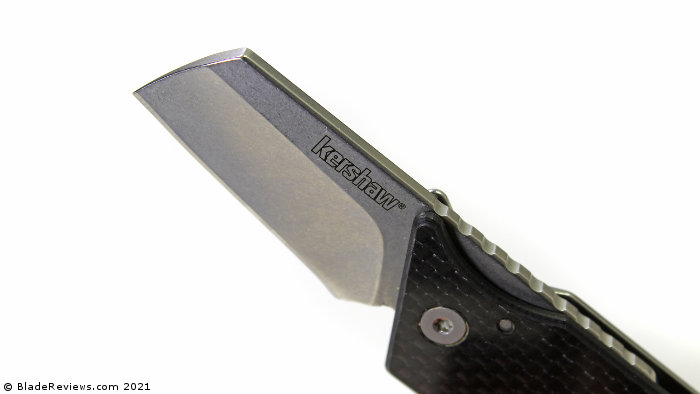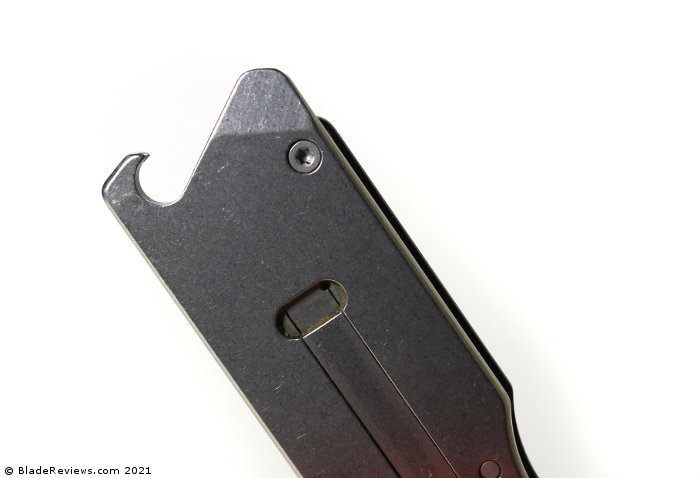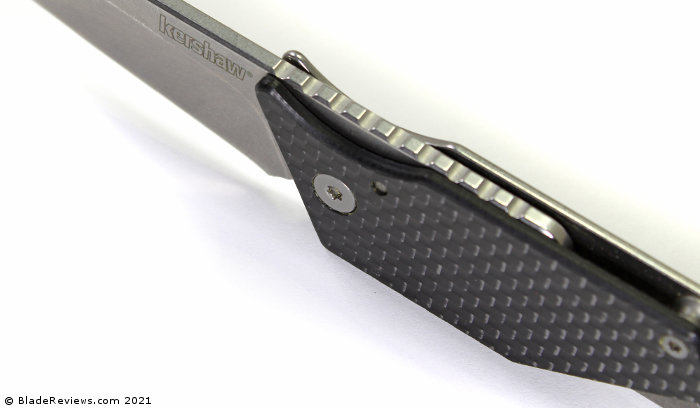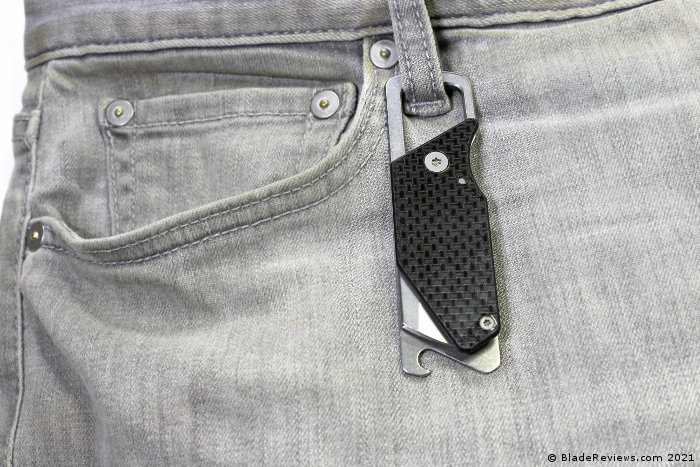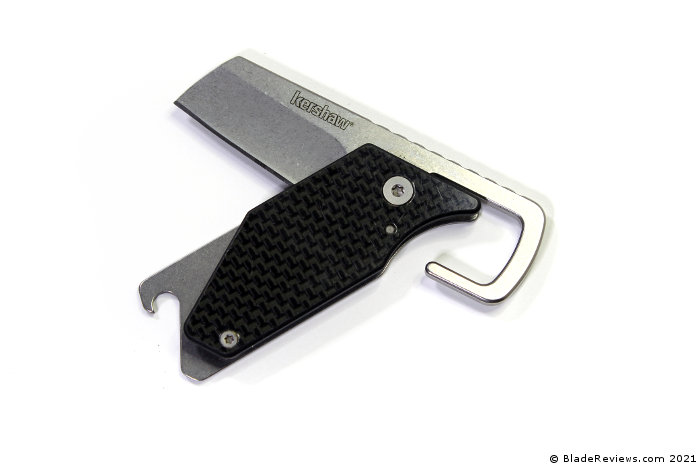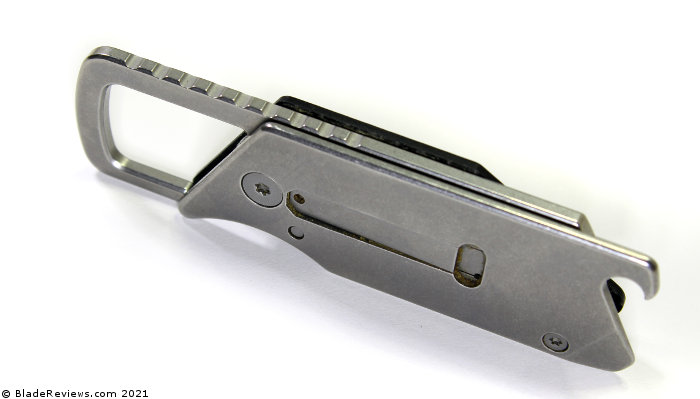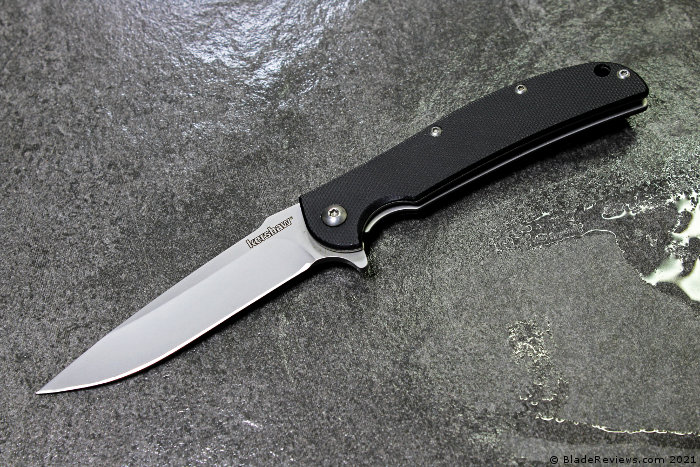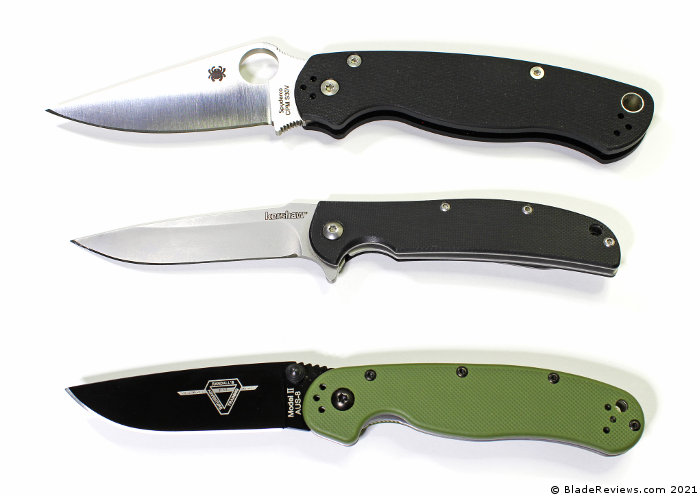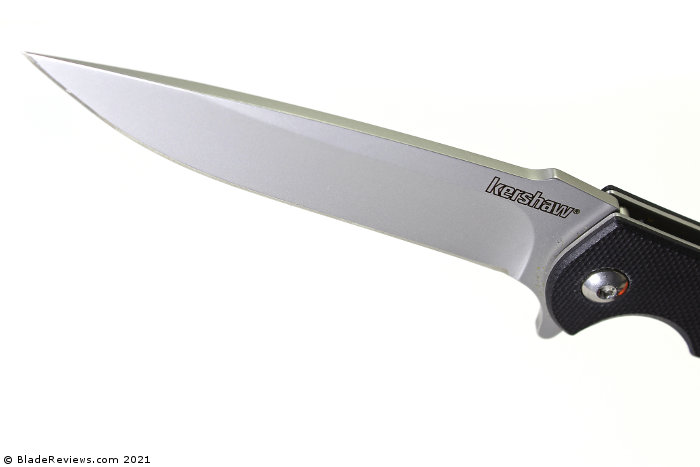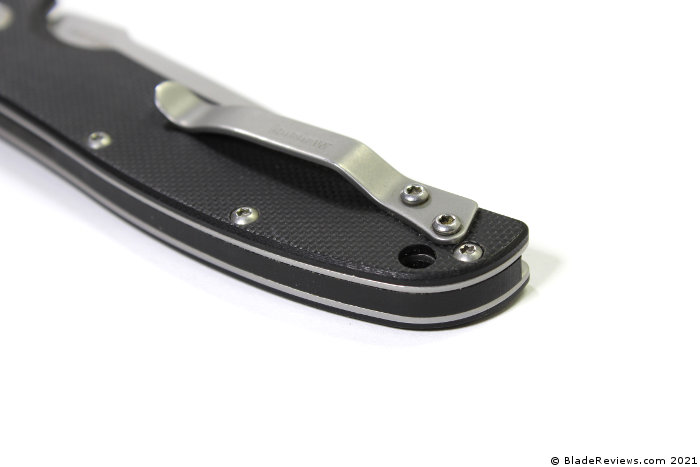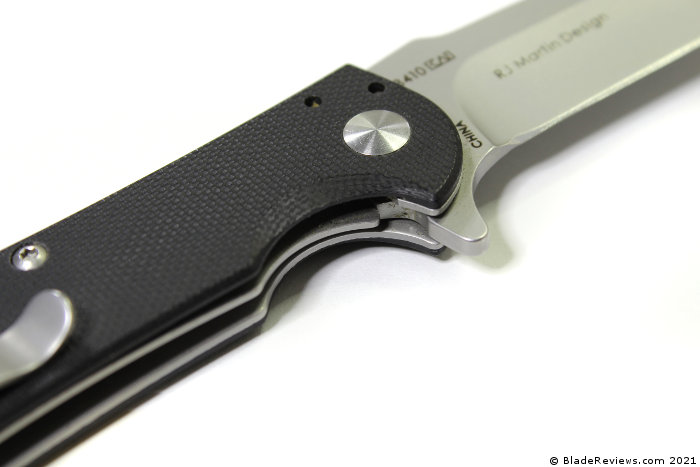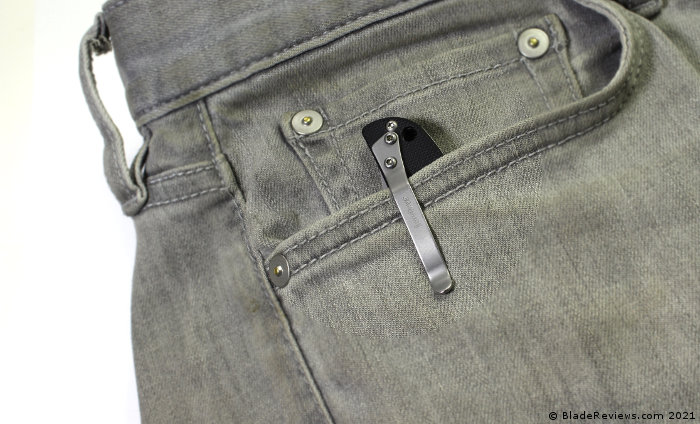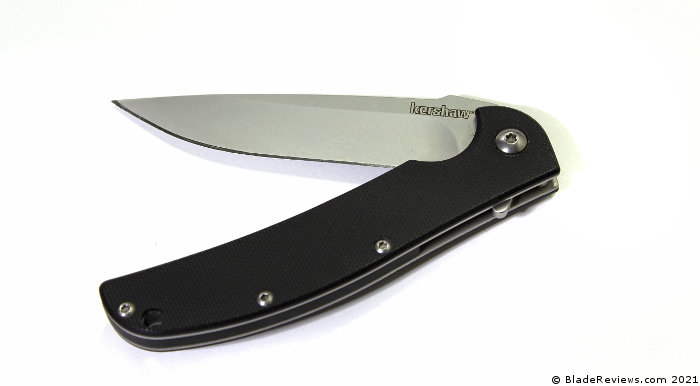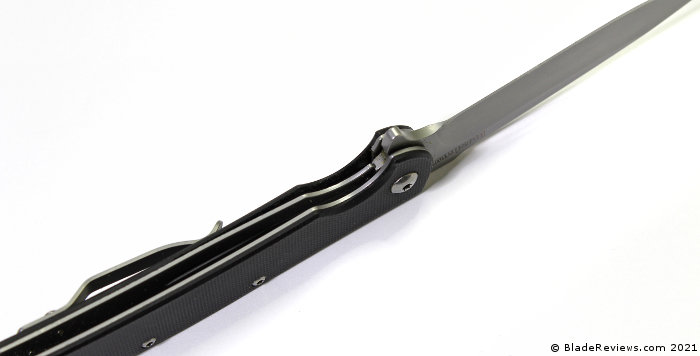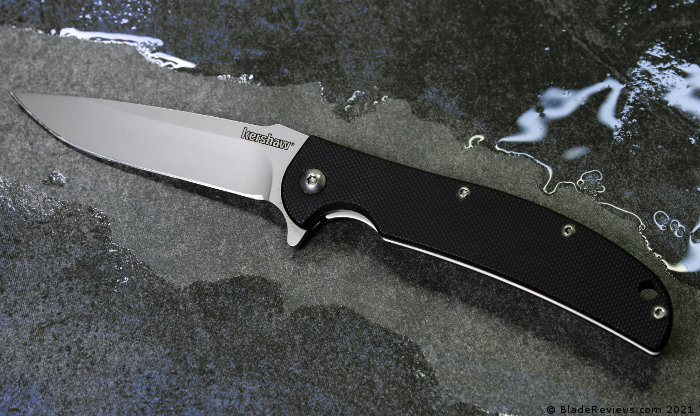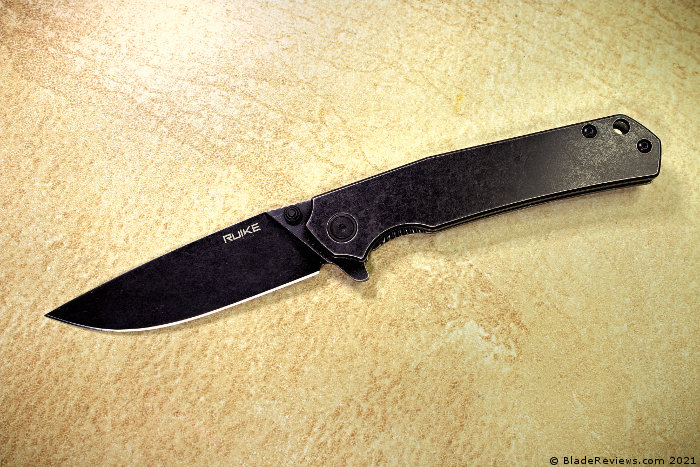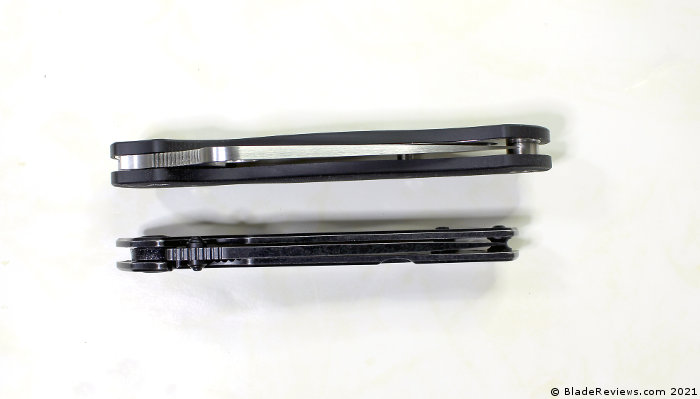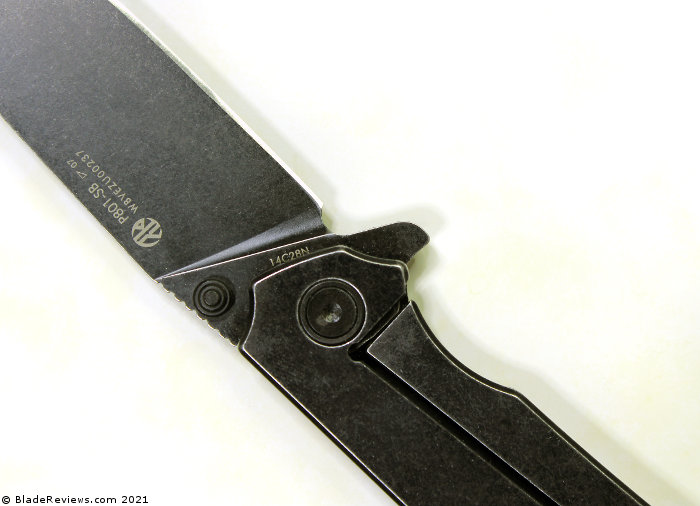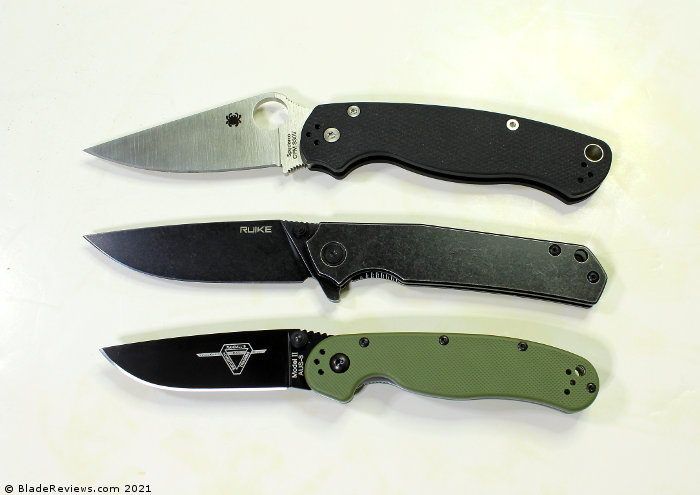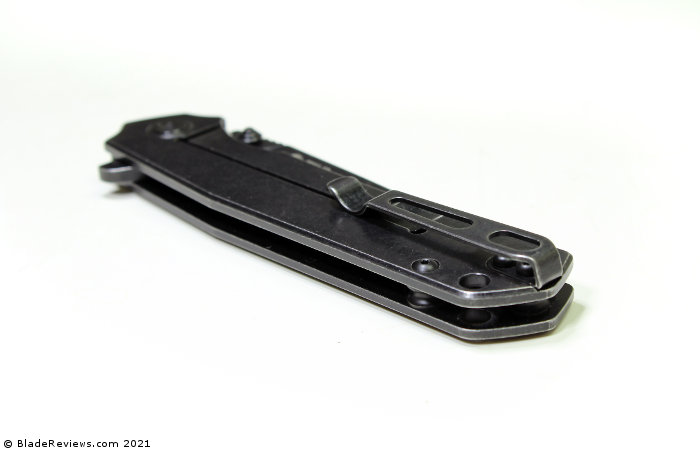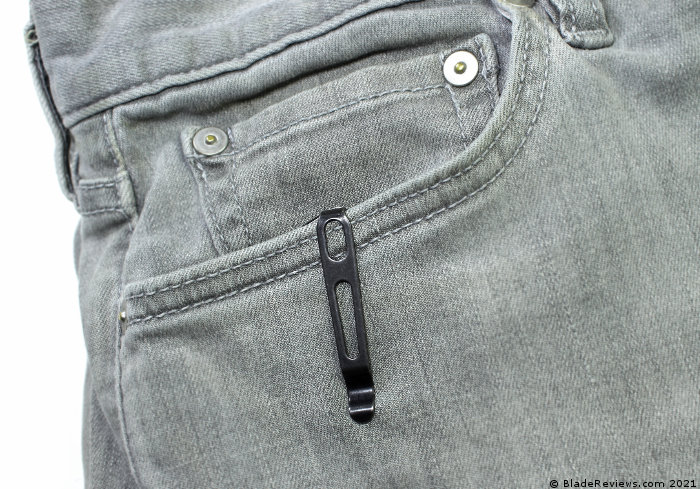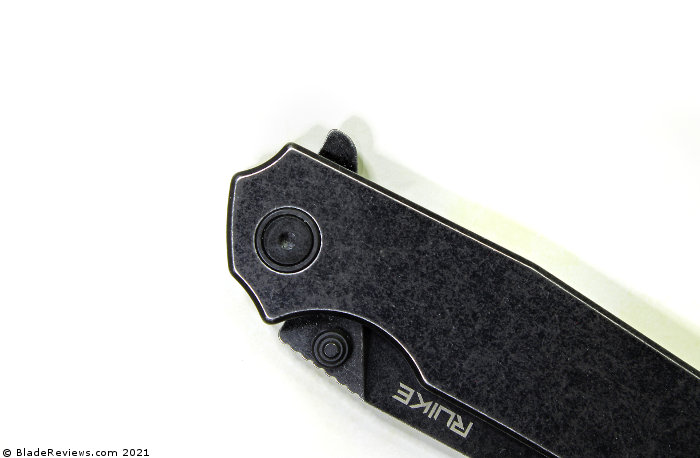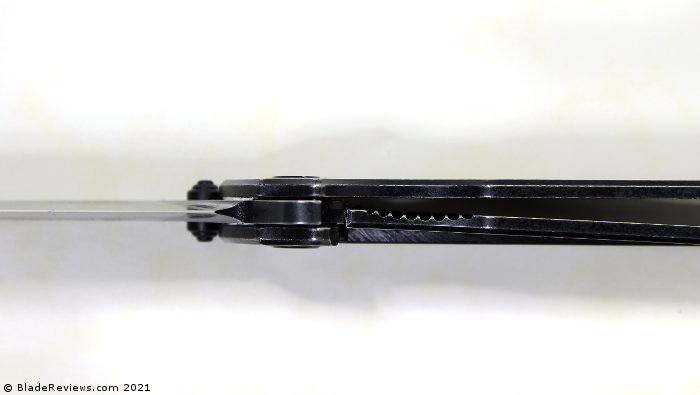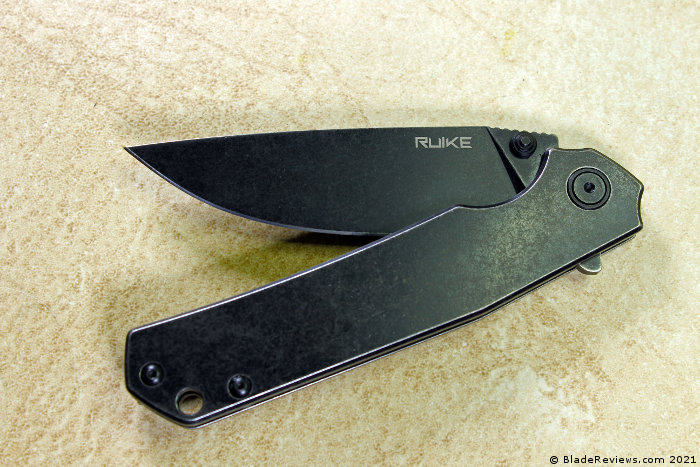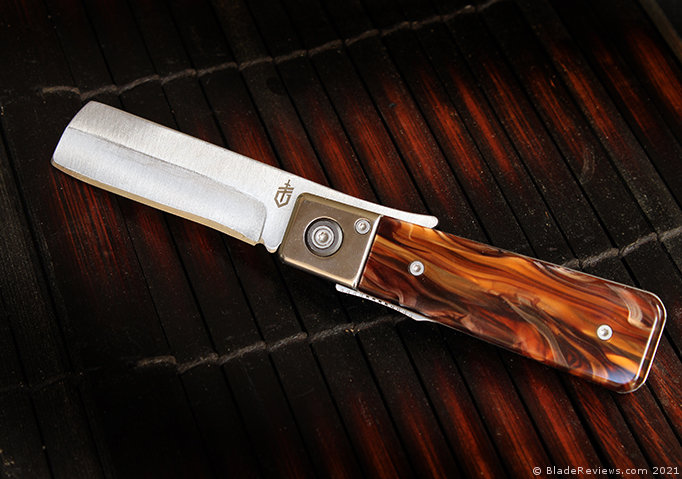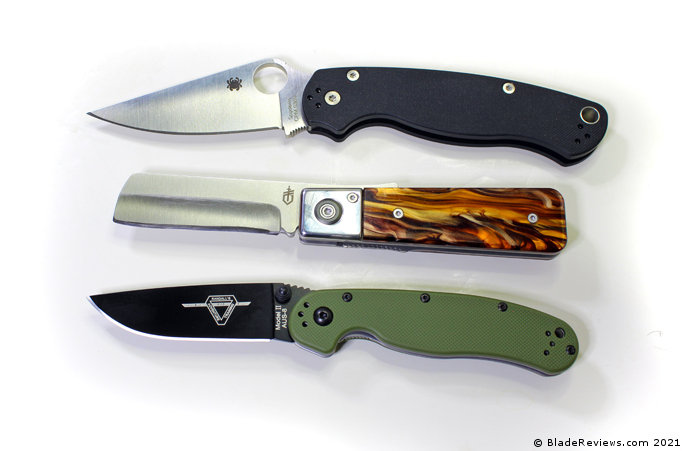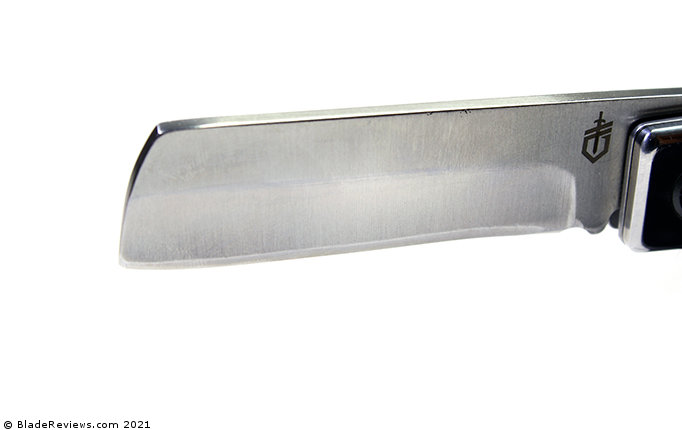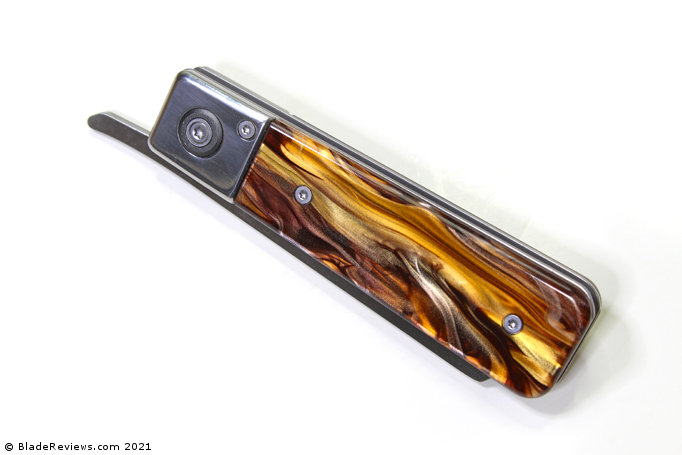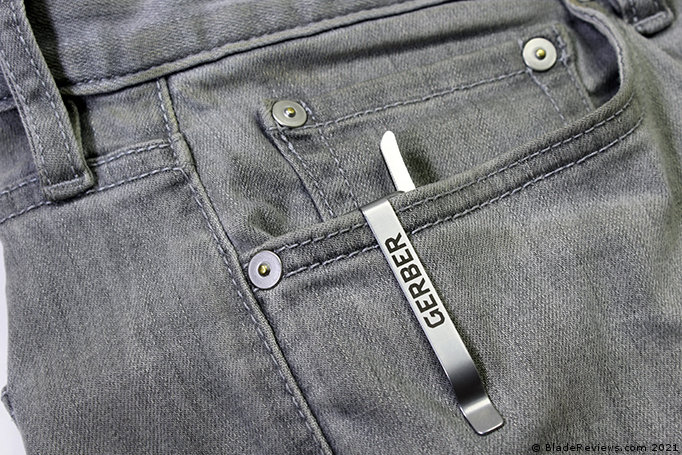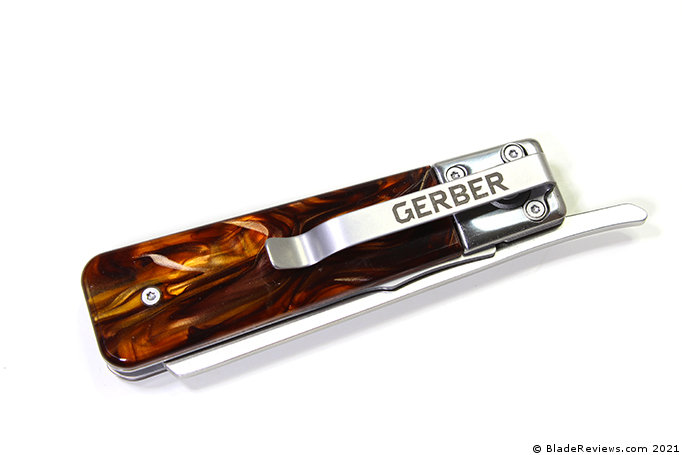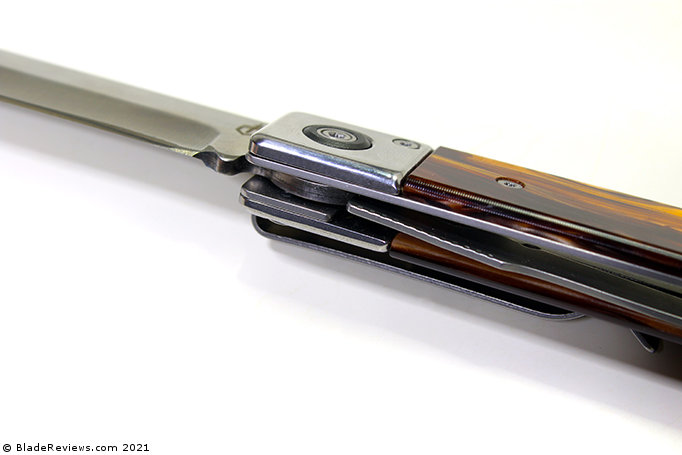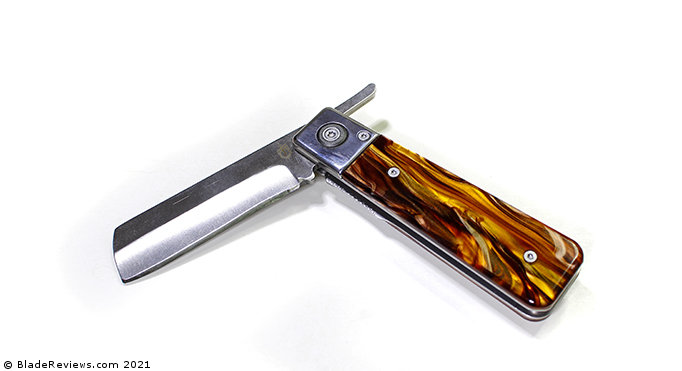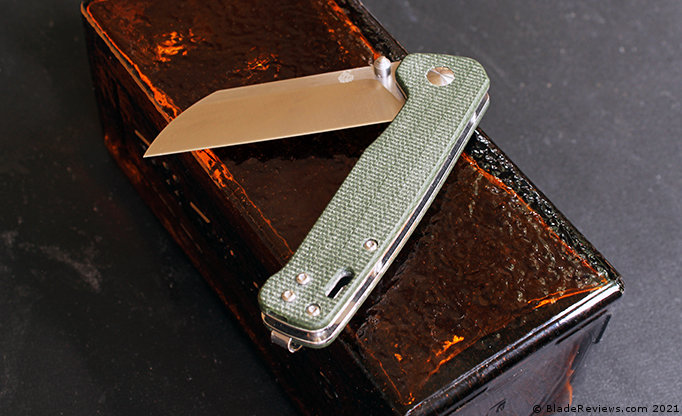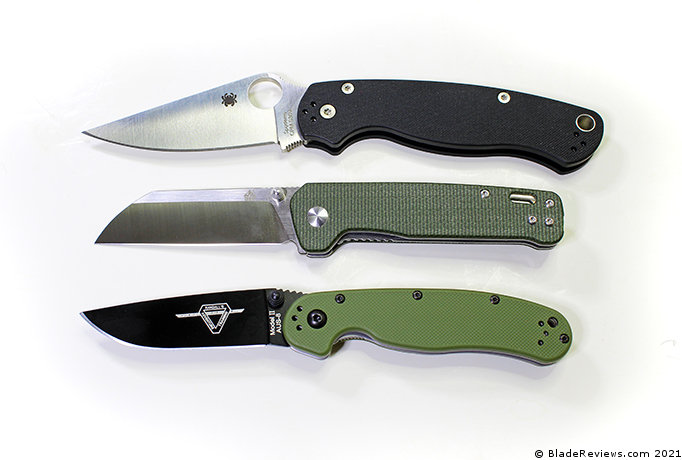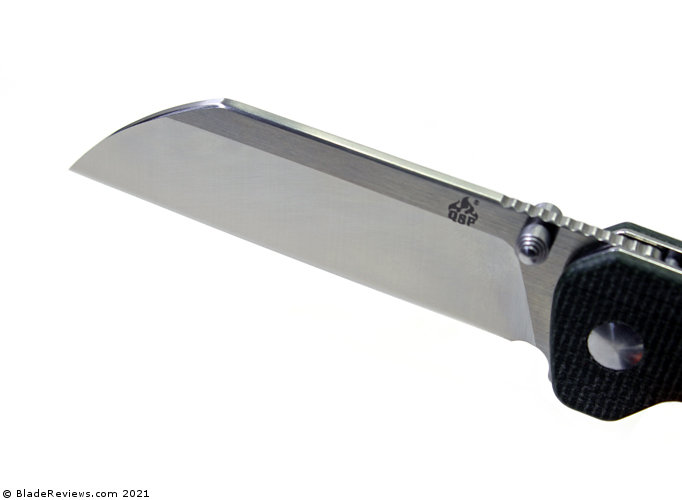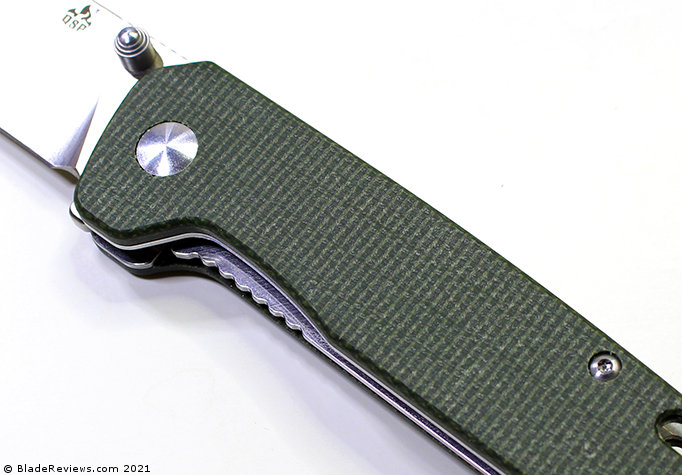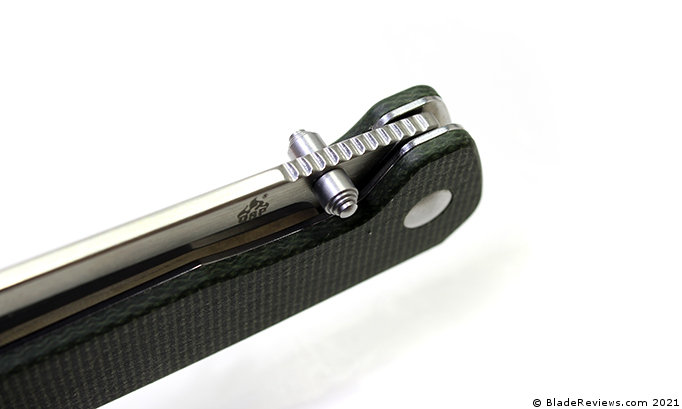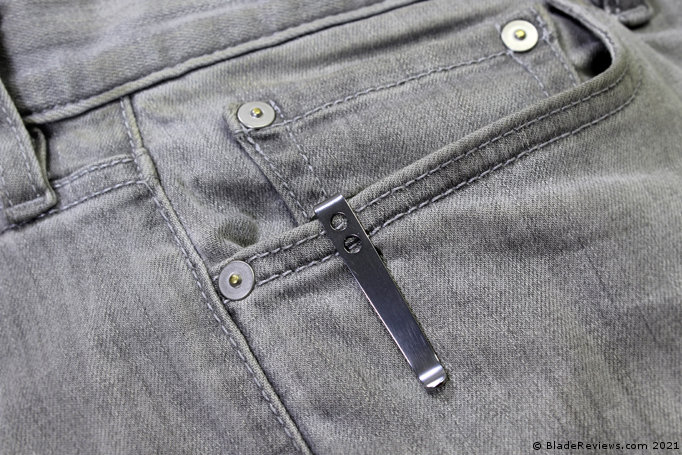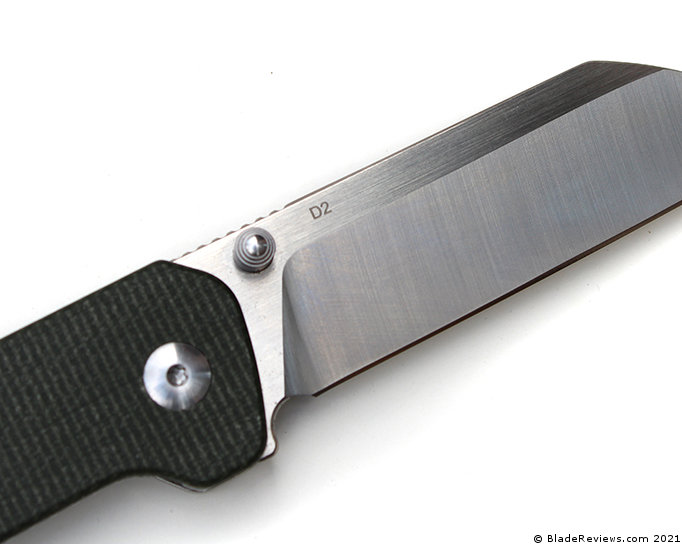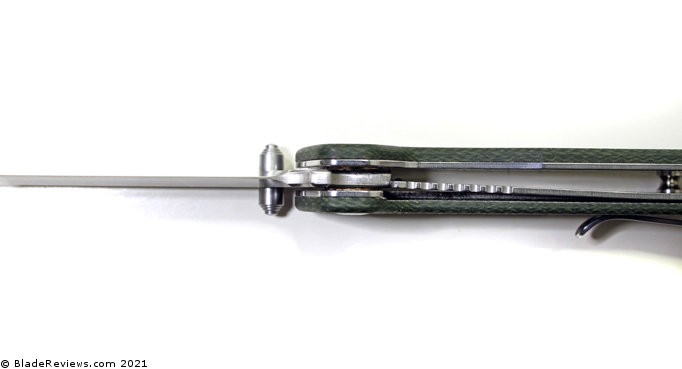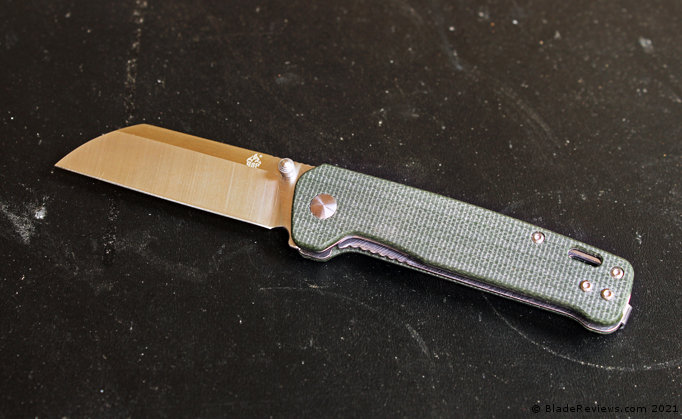I’m hardly the first to say it, but the rise of well-designed manual flippers has really thrown the value of automatic knives into question. When already-good flippers are paired with assisted-opening mechanisms, true autos are obviated ever further.
That said, my beef with many assisted-opening flippers is that they’re chasing an aspect of autos I find unnecessary at best and obnoxious at worst: actions that kick the blade so vigorously into the stop pin that they generate recoil. So aggro! If you ask me, the spring assist only needs to be strong enough to work with the momentum of a moderate flip.
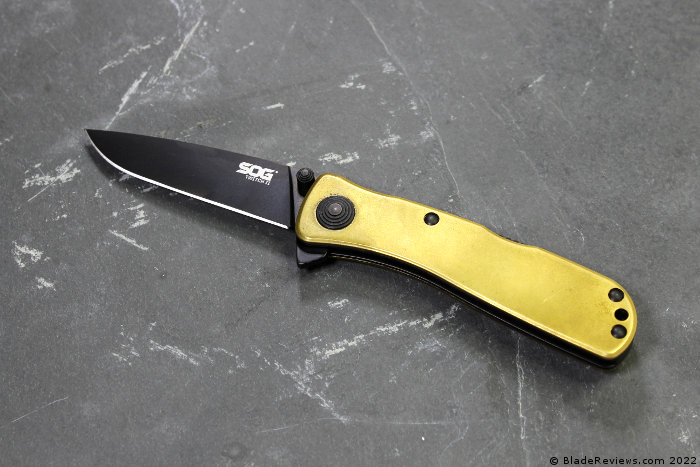
Buy the SOG Twitch II at BladeHQ
Buy on Amazon
While I can’t speak to SOG’s other assisted opening designs, the Twitch II is a knife built for me. Its action is decisive without being aggressive, and there’s a whole lot else to recommend it besides.
General Dimensions and Blade Details
The Twitch II puts a lot of performance into a small package. The body of the knife is just a hair over 3.5” long, a half inch at its widest point (including the clip!), and an inch and an eighth deep from flipper to closed blade spine. My brass-handled Twitch II was a relatively stout 3.58 oz measured on my digital scale, but you could trim that weight by a full ounce by opting for the aluminum scaled version if factory specs are to be trusted.
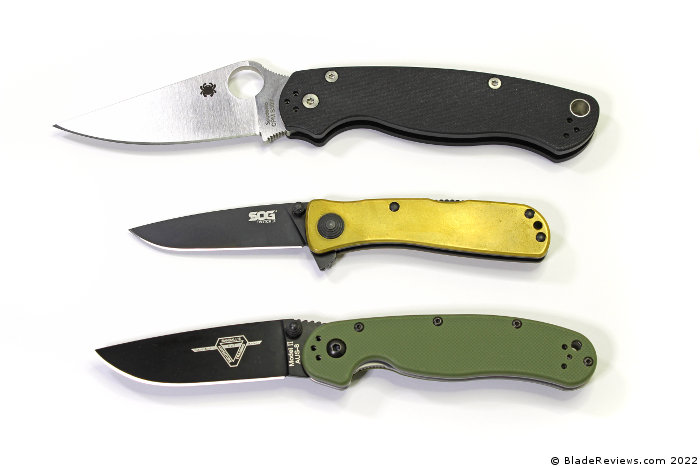
As you might note from the size comparison with a Spyderco PM2 and an Ontario Rat II, the Twitch II is a decidedly small knife. Often, I throw my Twitch II loose into a pocket. I notice the heft for the first few minutes I’m carrying it around, but it’s not long before I stop thinking about it. Just by feel, the clip and flipper tab make it very easy to orient and deploy the knife one-handed.
I can’t say enough good about this blade. At 2.75”, the drop point is long enough to perform medium-duty work. However, it is supremely, awesomely slicey. Fans of Spyderco’s blade grinds will find themselves comfortable here given the Twitch II’s full flat grind and well-sharpened, extremely uniform secondary bevel. Thanks to a thin stock that measures just 2mm at its widest point and a good amount of belly right where it needs to be, the knife cuts extremely well.
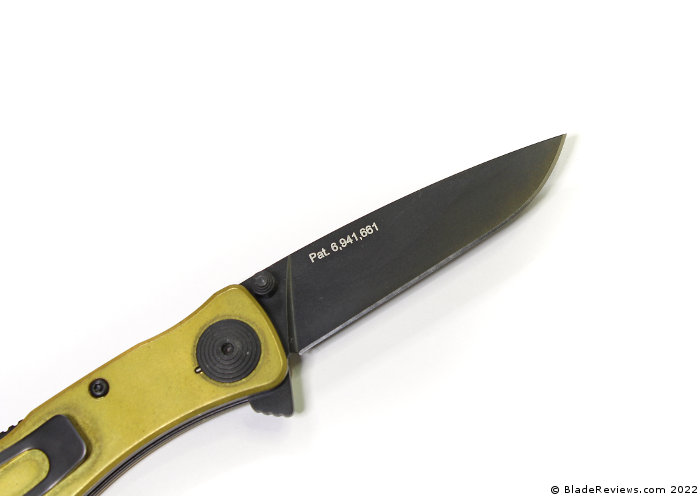
I’m not kidding. From the factory, my Twitch II came hair-popping sharp and made effortless confetti of stray paper. Having recently bought a Spyderco Chaparral, one of the company’s most well-lauded slicers, I think the Twitch II gives it a real run for its money at about a third of the cost.
The blade is made from AUS-8, which while being far from a “super steel” will likely hold its edge a bit longer on a small knife like this. And, if it happens to dull, even a novice can restore it back to a hellacious level of sharpness with only a modicum of effort.
What I can’t figure out is why SOG saw fit to put the patent number along the side of the blade. Do they imagine some Chinese counterfeiter is going to get the knife in hand and say “Aw, damn!” when he sees this arbitrary series of numbers? As if that’s what’s going to stop some unscrupulous overseas outfit from trying to reverse-engineer the design? It’s a frankly ugly and unnecessary detail that detracts from the Twitch II’s clean lines.
Handle, Ergonomics, and Pocket Clip
Ergonomically, there’s a lot to like. The balance point of the knife (at least on my brass version) lies almost exactly at the center of the handle, making the Twitch II feel very lively and precise in the hand. The very gentle inward slopes direct the thumb and fingers to little nooks where everything feels just right, and there are no sharp edges anywhere beyond the cutting edge. The Twitch II has the feel of a very precisely crafted tool in all respects.
Like a great number of pocket clips, I think the one included on the Twitch II is too stiff. It also exposes a good five-eighths an inch of knife, which is conspicuous for one as small as this. More reasons why I just throw mine in a pocket. However, I do really like the unintentional ergonomic function of the clip: it gives the middle finger a great little hollow to find its way into and provide a secure point of contact.
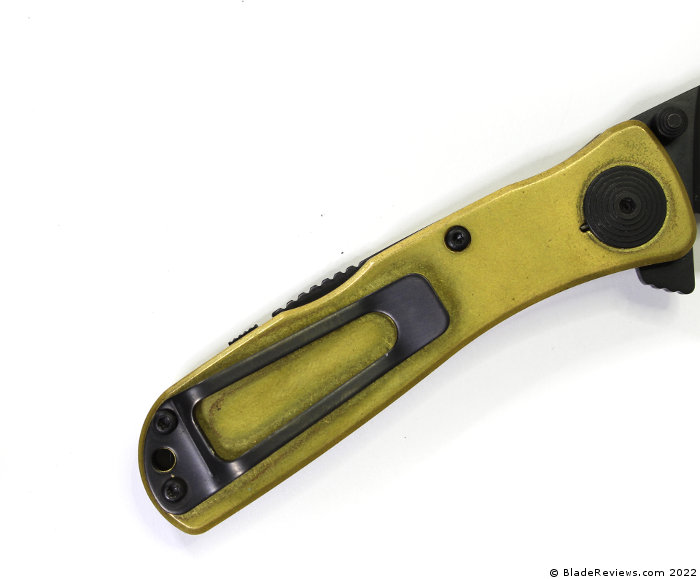
Even though the knife is extremely smooth, all of these little ergonomic details allow me to feel like I’ve always got a confident, secure grip on the knife. No aggressive texturing needed!
Deployment and Lockup
As mentioned before, the action is delightful. The flipper is designed as a “push button” style (as opposed to the “light switch” method I often employ on other knives). Overcome the detent, and the blade will deploy firmly, but not excessively. It announces itself with a gentle “snick” rather than something that sounds like a gunshot or an anvil falling off a table. However, if you want to rely on the Twitch II’s thumb studs, you can deploy the blade that way and watch it literally rocket out and into deployment.
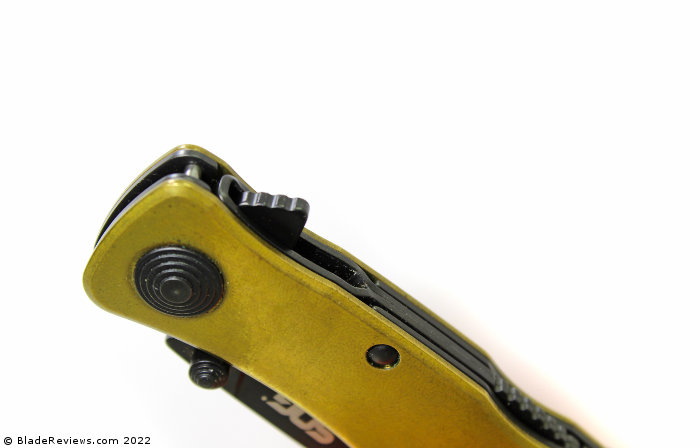
I’d mentioned I often carry the Twitch II loose. Comforting for me is the safety, which I can click upwards and not have to worry about the knife deploying when I don’t want it to. The detent isn’t exactly weak, but the safety is an appreciated “belt and suspenders” option to ensure the blade stays closed. Additionally, those who want to push the knife a little harder can use the safety to lock the blade in place once it’s engaged. Just for that little extra piece of mind.
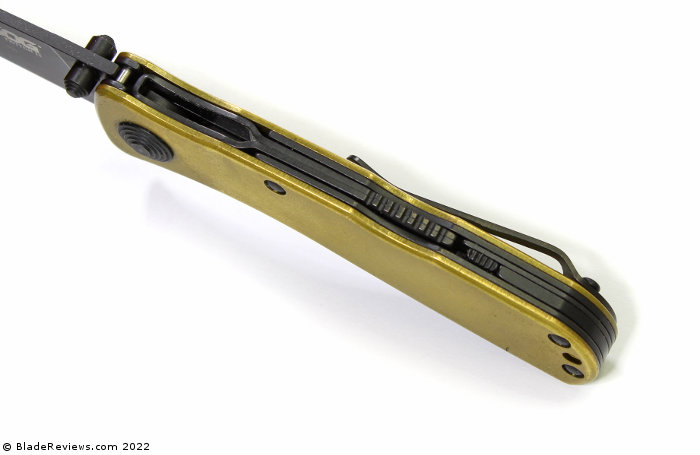
The Achilles heel of the Twitch II, if you can even call it that, is a little bit of blade play. There’s no wobble front-to-back, mind you, but you can induce a little lateral play if you grab the blade and move it. This is hardly a reason for me to throw the Twitch II into the nearest river.
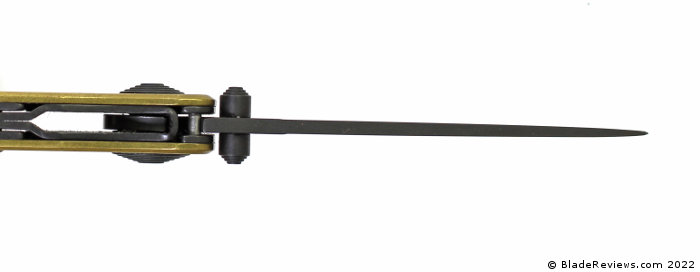
As for centering, it’s pretty decent by default. Kicked into deployment and folded into closure, the blade is in perfect parallel with the liners. Assuming you’re not wiggling it merely to disappoint yourself.
SOG Twitch II – Final Thoughts
The word “gentleman’s knife” gets thrown around quite a bit, but I’m surprised SOG’s Twitch II doesn’t come up more in the discussion. It’s a very functional (but not aggressive) knife with an easy deployment system, great build quality, and svelte dimensions. Dress the Twitch II up in its rosewood or anodized aluminum variants, and it looks even more the part. My brass-and-black version has a neat steampunk aesthetic that I think would turn heads without freaking out one’s coworkers. I’d argue the Twitch II is too small and too sophisticated to threaten a reasonable person.
Naturally, I think the great action, excellent ergos, and superior cutting performance right out of the factory are enough to recommended the Twitch II to enthusiasts reading this site. However, I think this is a wonderfully giftable knife for any gearheads or gadget freaks who have a penchant for dense little simple machines that do a job well.
As a final side note, SOG’s product mix is better than ever. A neat knife like the Twitch II is proof enough the company is interested in diversifying beyond the “hard dude tactical operator” aesthetic a number of people (fairly) associated them with in years past. This is a great knife for a great number of different users, and remarkably easy to recommend.
- 2.65 INCH AUS-8 STAINLESS STEEL KNIVES: This ultra sharp knife is a discreet emergency knife, hunting knife and every day pocket knife for men or women; measures 3.55 inches in closed length with model number: TWI8-CP
- SOG ASSISTED TECH (S.A.T.): Makes a great everyday carry, camping knife and outdoor knife; assisted opening knife system opens this straight edge clip knife one-handed
- FOLDING KNIFE "KICK": Release this fast opening knife with either hand using very little pressure; flick the EDC tactical folding knife "kick" on the back of the Twitch II and the folding knife into action
- TOUGH ALUMINUM HANDLE: These tough utility knives, camping knives and survival knives offer strength and durability with a hard-anodized aluminum handle
- SOG KNIVES FOR LIFE: Take care of your pocket knife and we'll take care of you; SOG folding knives and pocket knives are built to last, and we consider all repair and replacement requests
Editor: I recommend purchasing the SOG Twitch II at BladeHQ or Amazon. Thank you for reading.
